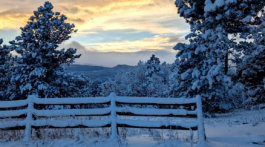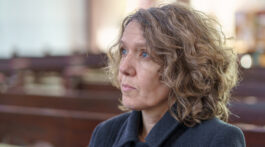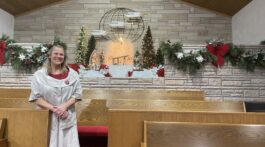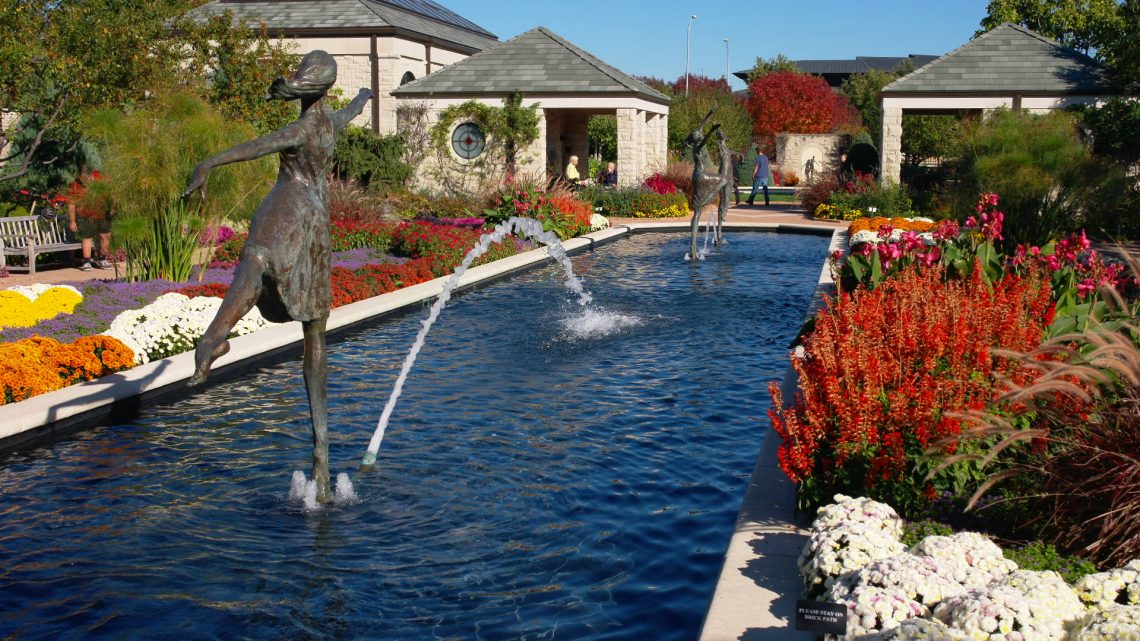Considering the whole spectrum of religious beliefs and spiritual affectations, I doubt that the concept of “nature church” is uniquely Adventist, but the phrase probably is. The concept of seeking God in the beauties and mysteries of the great outdoors as a supplement to formal worship is well-accepted in our subculture, and universally understood.
Some people who experience nature as a form of worship could be called pantheists, who essentially believe nature is God, while others (like Adventists) see nature as evidence of God, or “God’s second book.” “Early theologians believed the Book of Nature was a source of God’s revelation to mankind: when read alongside sacred scripture, the “book” of nature and the study of God’s creations would lead to a knowledge of God himself.” (Wikipedia, “Book of Nature”)
Many rhapsodize about the beauty of nature, including excellent gardeners like my sister, whose hands seem to call forth a rainbow of blooms as simply as breathing (I know it’s hard work, but she makes it look easy). My own relationship to nature is probably closer to that of our farming ancestors, who saw nature as something to be controlled and put to productive use rather than contemplated. It only occurred to me many years after my own Dad’s passing—after I met a man about his age who took note of deer in the meadow, took pictures of wildflowers on the hillside, delighted to unique birds outside the kitchen window—that my own Dad may have been a farmer but was not a naturalist. Similarly, as a homeowner who fights an unbelievable profusion of weeds and pests in the near-subtropical climate of Kansas City, I more often see nature as something to be resisted and subdued, leaving little time or energy to contemplate its more poetic aspects.
There are as many different forms of spiritual renewal to be found in nature as there are aspects of the outdoors, or of plant or animal life. To me, walking through a flower garden is simply “nice,” and we have over the years made dozens of Sabbath-afternoon trips to the Ewing and Muriel Kauffman Memorial Garden near the Country Club Plaza in Kansas City. I can sincerely appreciate the work of the master gardeners who tend this little jewel of a city garden throughout the year, energetically pruning and arranging perennials and planting an ever-evolving cast of annuals in lovely patterns. I can recognize the artfulness of plants that have colorful blooms and delicately shaped leaves and unique forms of growth. But the truth is that it doesn’t give me the same uplift of spirit that true flower-lovers go on about, doesn’t elicit the oohs and aahs of those who feel the joys of horticultural perfection deep in their souls. I can only equate my relatively shallow experience with flowers to those who hear music—might even be able to carry a tune—but feel no deep connection to the words or the notes or the way they are rendered.
However, there are certainly manifestations of nature, other settings and seasons, that leave me nearly speechless, filled with a sense of awe: The Grand Canyon, Arches, and other national parks of the Southwest, with their almost incomprehensible vistas; autumn leaves, from one tree to a forest of red and gold, against a deep blue sky; a bright winter morning with fresh-fallen snow creating an unbroken blanket of white on everything from fence posts to rooftops. In such moments, my feelings are well captured by the Bill Gaither Trio and their legendary mid-80s gospel hit, “A Perfect Heart,” whose chorus proclaims, with my own heart, “Bless the Lord, who reigns in beauty!”
Another song that speaks to the diversity of natural settings that can renew our souls as we encounter the Creator is Ralph Carmichael’s classic, “A Quiet Place.” Though Carmichael was at the vanguard of gospel music’s evolution in the twentieth century and occasionally courted controversy with the religious establishment for his contemporization of sacred song, his work has staying power (so does he—At 92, Carmichael is still alive and working!). In fact, Carmichael became so mainstream that a “A Quiet Place” is number 503 in the SDA Hymnal.
I recall hearing this song in congregational singing only once in my last quarter century at the church we attend, but I was surprised and pleased by how many people seemed to know it. The voice of the congregation was as gentle as the lyrics themselves, and I could sense a collective affection for the sentiments expressed and the sheer beauty of the melody, whose rise and fall seems to give the piece self-driven dynamics.
Although one of our church’s talented pianists frequently plays a skillful, sensitive version of “A Quiet Place” for preludes and offerings, I consider the definitive version the one recorded by the Heritage Singers on their 1974 album, “The Happy Side of Life.” And while their fashion looks almost clownish by today’s standards, the sound they produced was (as always) timeless. Their version of the song artfully speaks of going to places where God’s presence soothes our “troubled mind.”
With its simple acoustic guitar, and voices blended as perfectly as morning light breaking over the Grand Tetons, this arrangement never fails to inspire me. As they recall a place “sheltered by tree and flower,” their harmonies shelter my mind with voices that go from unison to parts, chords building and separating with an intensity that reflects the majesty of the rocky heights they’re singing about. Finally, they sing about the renewal of strength and courage we get from spending time in God’s second book.
What follows is one of the most remarkably crafted bits of musical arrangement and performance in the history of the art, a melange of skillful guitar playing and vocal layering, a soaring, wordless, musical encapsulation of the perfection of God’s creation. Look it up.
Many years ago, I was asked to help a sweet older lady pull the weeds from a flowerbed in preparation for a wedding we were both connected to at a country estate. As we worked, we talked, and she spoke of how weeds always reminded her of Satan, and how the curse of sin had turned the Garden of Eden into the “Garden of Weedin’.” A bit later, she described how she had once decided on a unique project for “investment”—not investment in the generic sense, but the now-forgotten practice in which many SDAs would undertake some little side business to earn a bit of extra money to give to missions. Her local county fair had announced they would give a cash prize for the largest weed anyone could bring to the fair, and she was determined to earn this money for investment. She had entered the contest with the biggest, baddest weed on her acreage, and she had won! After an appropriate pause, I said that it was wonderful and ironic that she had actually taken the product of Satan’s rebellion, a weed, and turned it into money that would advance the gospel.
This, then, is our dualistic, contradictory relationship with nature: boundless inspiration and eternal struggle. In the words of the late folk-gospel musician Mark Heard: “Day to day we ache with the pain that plagues creation. Night to night, we lie awake, and await its restoration.”










